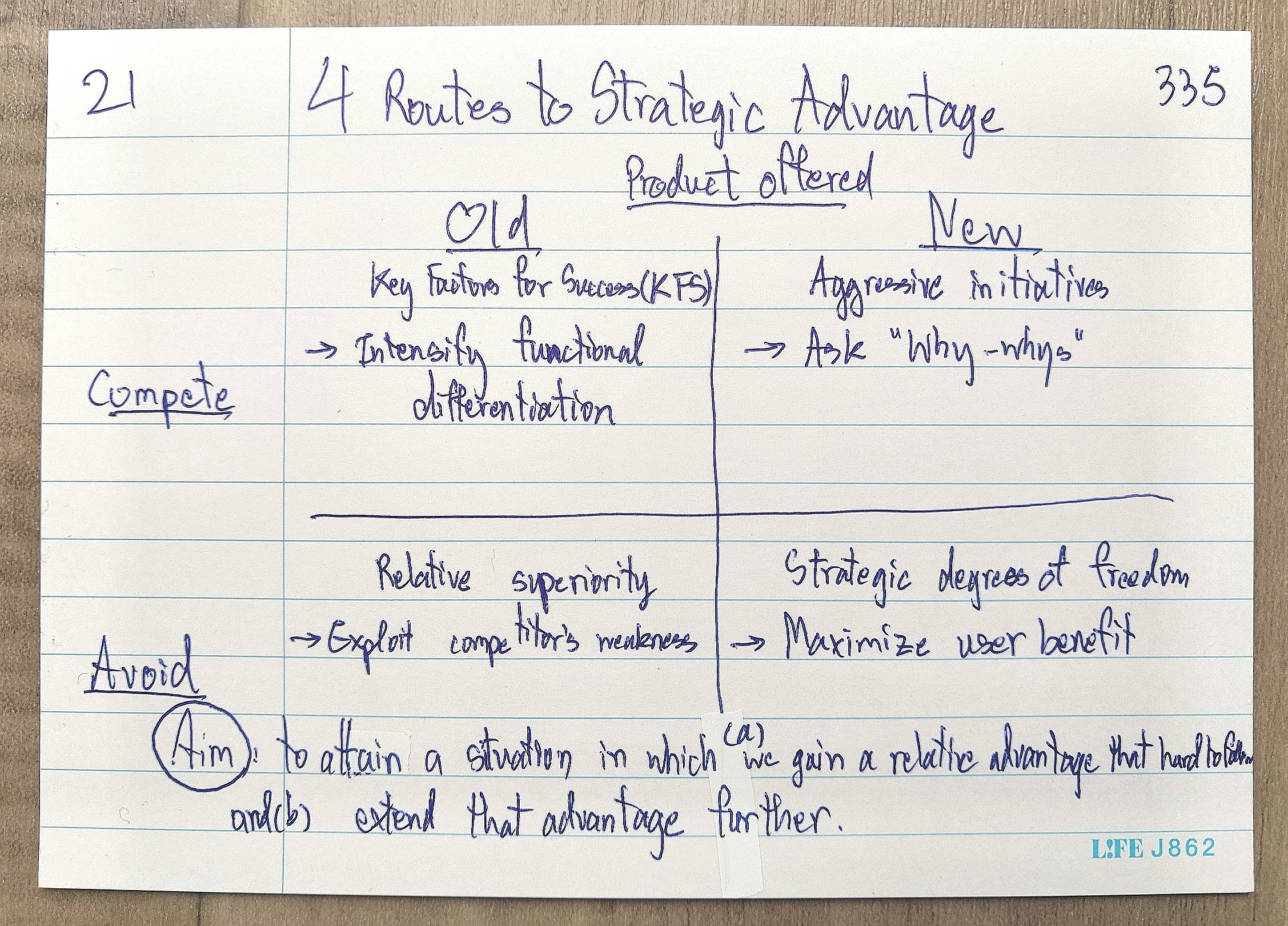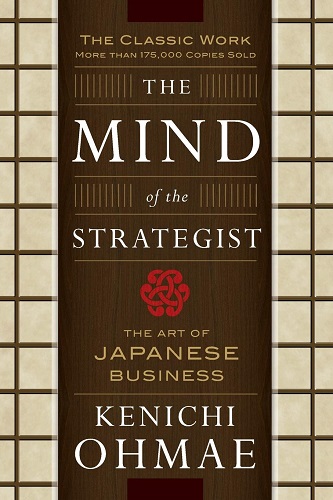Category: Corporate Strategy
(62 von 100)
Why: I need to decide on a strategy for the DIY tools business.
Goal: Learn how to decide which strategy to use and when.
Table of Contents
Action: Analyze and Reconstruct Resources.
3 Key Concepts
- Strategize to bring about competitive advantage at the right time.
- Business strategy is relative, win the edge over other competitors.
- Perfectionism is a trap, performance comes from both planning and execution.
Summary
How to analyze the situation and reconstruct strengths?
Analyze the current situation is always the first step to every problem-solving effort. Strategizing is to solve the situation with its resources or recognize the defeat and attempt to change the battlefield itself.
This book shows the power of both analytic skills and creative skills in business strategy. I couldn’t help myself see how this is ingrained in a case interview to become a management consultant. It makes sense. This is their daily work.
Goal of Strategy
To bring about the conditions most favorable to one’s own side; gain a competitive advantage.
At the right moment to attack or withdraw.
By assessing the limits of compromise in resource allocation correctly.

Strategy is Relative
To win in an absolute term is not only unrealistic, but it is also unnecessary. Because of the capital scarcity, any attempt that goes beyond the company’s capability is a waste.
Corporate strategy implies an attempt to alter a company’s strength relative to its competitors in the most efficient way.
Without competitors, there would be no need for strategy.
Kenichi Ohmae
Four Routes to Strategic Advantage
Aim: to attain a situation in which
(a) we gain a relative advantage that hard to be followed.
(b) extend that advantage further and sustainably.

First: Key Factors for Success
For an existing product to compete for head-on.
By intensifying functional differentiation.
The strategy is that a company allocates resources to strengthen company’s capabilities to increase its market share and profitability.
2 Approaches
- Dissect the market as imaginative as possible to identify key segments.
- Analyze and distinguish differences between winners and losers.
Second: Relative Superiority
For an existing product to avoid head-on competition.
By exploiting competitor’s weaknesses.
2 Approaches
- make use of technology and sales network profitability.
- make use of differences in the composition of assets between companies.
Third: Aggressive Initiatives
For a new product to compete for head-on with well-established competitors.
By asking why-whys to scrutinize what really was the selling point, we can win.
The strategy is to upset KFS on which the competitor has built an advantage. If there is no KFS to win on with the current situation, one goes so far as to change the game’s rules or status quo.
Fourth: Strategic Degree of Freedom
For a new product to avoid head-on competition.
By maximizing user benefit in a certain axis in a certain sequence.
The strategy is to deploy innovations. For example, opening up new markets, developing new products to exploit untouched/unsatisfied market segments.
Perils of Perfectionism
In the VUCA world, any strategy that fails to take account of ever-changing trends is deemed suboptimal or, at times, useless. Because it loses the potential to draw out company performance.
Corporate performance is the result of combining planning and execution.
Corporate performance is like a boat race. No matter how hard each crew rows, it the coxswain doesn’t choose the right direction, the crew can never hope to win. Also true vice and versa.
Kenichi Ohmae
To sum up, any strategy starts with a good analysis of the situation, followed by a precise reconstruction of effort to match the company’s strength.
The other book underlines strategy in action is “What I Didn’t Learn in Business School: How Strategy Works in the Real World” by Jay B. Barney & Trish Gorman Clifford.
Goal check: I learned which strategy to use for my product and current business situation.
Wasu’s Review
( 4.5 / 5.0 )
Get this book on Amazon here!
Bonus: learn more about 3Cs: in the construction of any business strategy, 3 main players must be taken into account: Customer, Corporate, and Competitor.

